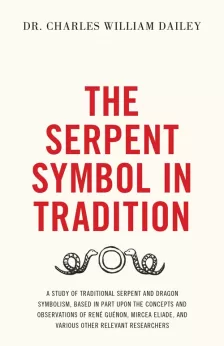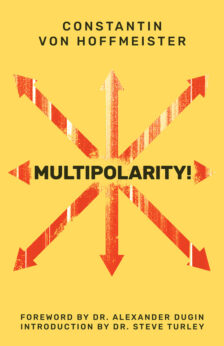In Being and Time, Heidegger contrasts the authenticity of the individual with the unconsciousness of the ‘they.’ ‘They,’ the great mass of humans, is sub-conscious: its consciousness is ‘lowered’ because of both external and self-imposed spiritual and mental shackles — as with Plato’s troglodytes in the Allegory of the Cave. The ‘they’ has well-worn, but also newly programmed, habits and proclivities that ‘swallow up’ all individual thought patterns in endless and exhaustive processes of routine. The comfort and apparent safety of this dubious condition is naturally compelling to the animal instinct — the ‘mass’ which assimilates all inauthentic, potential, humans. But such is the case, also, with what is in modern times called ‘art.’ In human society (the ‘state’), inauthentic, potential, humans succumb to the unconscious allure of the ‘they,’ and they are called ‘human.’ In the art world of self-important ‘critique,’ inauthentic ‘artworks’ perpetuate the lowest common denominator of all expression: political (that is, power-seeking) complaint directed at ‘the masters’ — actual works of art. This method of complaint is absent in the synthesis intrinsic to what Heidegger calls, in “The Origin of the Work of Art,” ‘great art’ — actual art — which he contrasts with ‘tools’ or ‘equipment.’ But inauthentic individuals, I contend, are the latter — tools in a system that is founded upon a dimly perceived, sometimes completely unknown, (true) artwork. ‘They’ is the network of all tools, human-y or otherwise, and so in inauthentic humans and alleged artworks both, there is the same failure, the same unrealized potential, the same fakery. There (‘da’) is the tool ‘swallowed up’ into a network of relations that it cannot, will not in the case of potential humans, reflect on.
Heidegger’s authenticity and ‘great art,’ unlike his ‘they-self’ and ‘tool-being,’ are what I term ‘holistic’ forms of being. Unlike failed, or potential, humans — or ‘things’ promoted as art — authentic individuals and real artworks focus on, or are focused on, completeness — revealing or trying to reveal the whole, the ‘universe’ — although always from a specific, determinate, perspective. Inauthenticity and ‘tool-being’ — opposites of authenticity and great art — don’t focus on completeness because they don’t attempt to uncover it. They don’t recognize truth. ‘They,’ respectively: 1) behave as conditioned proto-humans and 2) function as ‘made’ objects existing in the perceptions of a preexisting perspective of the whole/universe that others reveal. This latter revelation comes either from authentic individuals or ‘great art’: again, actual art. Authentic or ‘realized’ humans can still be authentic and still seek holistic understanding by ‘only’ consciously embracing an already-revealed truth presented in an already-created (real) artwork — the authentic individual need not create ‘his own’ work of art to ground his own being in order to be authentic, unless we say that his very self is that artwork.
The potential human, an atom of ‘they,’ doesn’t search for the whole, the universe. It doesn’t explore or discover. Such is its essence, its ‘tool-being.’ It ‘rests’ in a whole that is pre-provided by ‘they.’ It is an animate tool ‘swallowed up’ into a premade system that in no way treats it as a true ‘end in itself’ — not unlike a metal bearing swallowed up into the functioning of a car or jet engine. It does not, from its perspective, attempt to uncover how its being fits into a ‘greater whole.’ By contrast, like the authentic human, ‘great art’ (real art) necessarily opens up a vantage on the whole, the universe — it doesn’t, like ‘critique,’ search only for flaws or engage in piecemeal ‘problem-solving.’ The artwork, the authentic human, in sum, doesn’t rest within another being’s horizon, whether it be another artwork or another authentic human. For, ‘resting’ is what the tool, whatever material form it takes, does. Only, also, does the authentic person have the means, the self-knowledge, to identify ‘great art’ as art. In all cases, whether explicitly or implicitly, tools of various kinds, by various means, are ‘told’ what both art and they themselves are — and ‘they’ rest in this instruction. They, consciously or unconsciously, are ‘programmed’ to do what they ‘should.’ They do not, as a result, seek answers to the ‘big questions’ — they do not philosophize, although they likely will ‘specialize’ and sometimes call this philosophy. But neither is a true work of art or an authentic person only a question, only a critique. Both are ends of processes of questioning and critique.
The essential difference between art and what is sometimes, especially lately, called art is that, although the latter can implicitly or explicitly question the world, it cannot reach a holistic resolution to this questioning. The same is true of authentic as opposed to inauthentic humans. In both cases, the first achieves a synthesis of what it itself is based upon questioning, but not upon resting in questioning. The inauthentic person, the potential human, may very heartily wonder about the world and its ‘troubles’ or ‘mysteries,’ or not, but he will never decide, “Here am I. Here I stand. I am what I am.” By means of ‘new and improved information,’ or like a mote of dust, the inauthentic person is ‘thrown’ any which way into the future — a ‘project’ of others: ‘they.’ Such is the being of the pseudo-artwork as well. Both may be appropriated — subjected to endless interpretation, endless questioning — but the true artwork and the authentic human each have a center of meaning, an axis mundi, that cannot be compromised. For, the resolution ‘I am’ is a willful embrace of a whole, of a universe, and neither criticism nor unconscious acceptance can create this embrace. Proud consideration of ‘all the variables’ or ‘additional information on the subject’ simply will not do. For, it is not a matter of ‘formulating a hypothesis’ and ‘testing hypotheses.’ These comportments toward ‘the world’ are indefinite processes that put off for becoming, becoming something. Although faux art and inauthentic humans critique and blindly accept, they never venture to uncover a world. But…the meaning of Being is completeness: that which is uncovered by the will, not by the analytic faculty.








